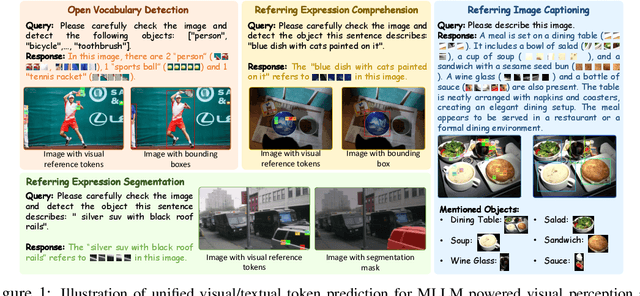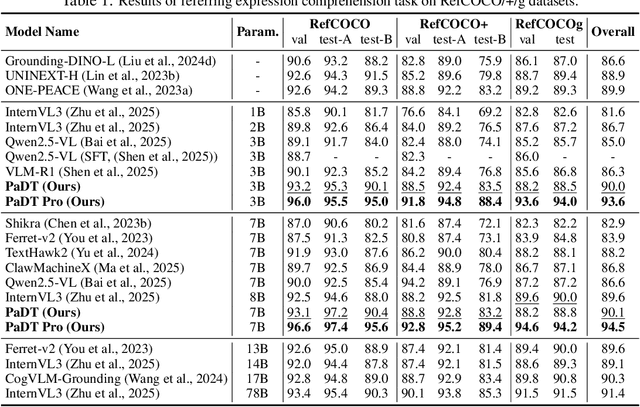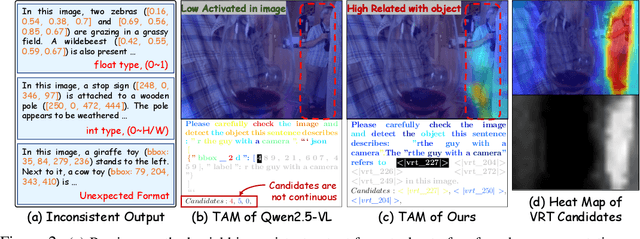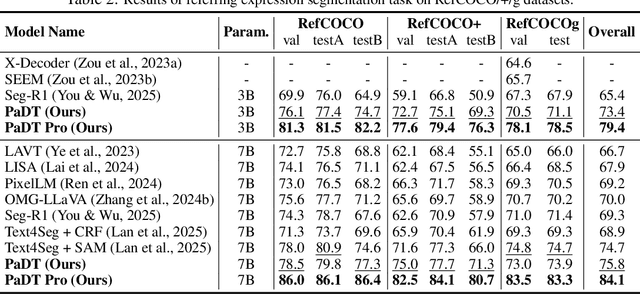Xun Xu
The Reward Model Selection Crisis in Personalized Alignment
Dec 28, 2025Abstract:Personalized alignment from preference data has focused primarily on improving reward model (RM) accuracy, with the implicit assumption that better preference ranking translates to better personalized behavior. However, in deployment, computational constraints necessitate inference-time adaptation via reward-guided decoding (RGD) rather than per-user policy fine-tuning. This creates a critical but overlooked requirement: reward models must not only rank preferences accurately but also effectively guide token-level generation decisions. We demonstrate that standard RM accuracy fails catastrophically as a selection criterion for deployment-ready personalized alignment. Through systematic evaluation across three datasets, we introduce policy accuracy, a metric quantifying whether RGD scoring functions correctly discriminate between preferred and dispreferred responses. We show that RM accuracy correlates only weakly with this policy-level discrimination ability (Kendall's tau = 0.08--0.31). More critically, we introduce Pref-LaMP, the first personalized alignment benchmark with ground-truth user completions, enabling direct behavioral evaluation without circular reward-based metrics. On Pref-LaMP, we expose a complete decoupling between discrimination and generation: methods with 20-point RM accuracy differences produce almost identical output quality, and even methods achieving high discrimination fail to generate behaviorally aligned responses. Finally, simple in-context learning (ICL) dominates all reward-guided methods for models > 3B parameters, achieving 3-5 point ROUGE-1 gains over the best reward method at 7B scale. These findings show that the field optimizes proxy metrics that fail to predict deployment performance and do not translate preferences into real behavioral adaptation under deployment constraints.
Enhancing Generalization of Depth Estimation Foundation Model via Weakly-Supervised Adaptation with Regularization
Nov 18, 2025Abstract:The emergence of foundation models has substantially advanced zero-shot generalization in monocular depth estimation (MDE), as exemplified by the Depth Anything series. However, given access to some data from downstream tasks, a natural question arises: can the performance of these models be further improved? To this end, we propose WeSTAR, a parameter-efficient framework that performs Weakly supervised Self-Training Adaptation with Regularization, designed to enhance the robustness of MDE foundation models in unseen and diverse domains. We first adopt a dense self-training objective as the primary source of structural self-supervision. To further improve robustness, we introduce semantically-aware hierarchical normalization, which exploits instance-level segmentation maps to perform more stable and multi-scale structural normalization. Beyond dense supervision, we introduce a cost-efficient weak supervision in the form of pairwise ordinal depth annotations to further guide the adaptation process, which enforces informative ordinal constraints to mitigate local topological errors. Finally, a weight regularization loss is employed to anchor the LoRA updates, ensuring training stability and preserving the model's generalizable knowledge. Extensive experiments on both realistic and corrupted out-of-distribution datasets under diverse and challenging scenarios demonstrate that WeSTAR consistently improves generalization and achieves state-of-the-art performance across a wide range of benchmarks.
Patch-as-Decodable-Token: Towards Unified Multi-Modal Vision Tasks in MLLMs
Oct 02, 2025



Abstract:Multimodal large language models (MLLMs) have advanced rapidly in recent years. However, existing approaches for vision tasks often rely on indirect representations, such as generating coordinates as text for detection, which limits performance and prevents dense prediction tasks like segmentation. To overcome these challenges, we introduce Patch-as-Decodable Token (PaDT), a unified paradigm that enables MLLMs to directly generate both textual and diverse visual outputs. Central to PaDT are Visual Reference Tokens (VRTs), derived from visual patch embeddings of query images and interleaved seamlessly with LLM's output textual tokens. A lightweight decoder then transforms LLM's outputs into detection, segmentation, and grounding predictions. Unlike prior methods, PaDT processes VRTs independently at each forward pass and dynamically expands the embedding table, thus improving localization and differentiation among similar objects. We further tailor a training strategy for PaDT by randomly selecting VRTs for supervised fine-tuning and introducing a robust per-token cross-entropy loss. Our empirical studies across four visual perception and understanding tasks suggest PaDT consistently achieving state-of-the-art performance, even compared with significantly larger MLLM models. The code is available at https://github.com/Gorilla-Lab-SCUT/PaDT.
Box-Level Class-Balanced Sampling for Active Object Detection
Aug 25, 2025



Abstract:Training deep object detectors demands expensive bounding box annotation. Active learning (AL) is a promising technique to alleviate the annotation burden. Performing AL at box-level for object detection, i.e., selecting the most informative boxes to label and supplementing the sparsely-labelled image with pseudo labels, has been shown to be more cost-effective than selecting and labelling the entire image. In box-level AL for object detection, we observe that models at early stage can only perform well on majority classes, making the pseudo labels severely class-imbalanced. We propose a class-balanced sampling strategy to select more objects from minority classes for labelling, so as to make the final training data, \ie, ground truth labels obtained by AL and pseudo labels, more class-balanced to train a better model. We also propose a task-aware soft pseudo labelling strategy to increase the accuracy of pseudo labels. We evaluate our method on public benchmarking datasets and show that our method achieves state-of-the-art performance.
AD-FM: Multimodal LLMs for Anomaly Detection via Multi-Stage Reasoning and Fine-Grained Reward Optimization
Aug 06, 2025



Abstract:While Multimodal Large Language Models (MLLMs) demonstrate remarkable capabilities across diverse domains, their application to specialized anomaly detection (AD) remains constrained by domain adaptation challenges. Existing Group Relative Policy Optimization (GRPO) based approaches suffer from two critical limitations: inadequate training data utilization when models produce uniform responses, and insufficient supervision over reasoning processes that encourage immediate binary decisions without deliberative analysis. We propose a comprehensive framework addressing these limitations through two synergistic innovations. First, we introduce a multi-stage deliberative reasoning process that guides models from region identification to focused examination, generating diverse response patterns essential for GRPO optimization while enabling structured supervision over analytical workflows. Second, we develop a fine-grained reward mechanism incorporating classification accuracy and localization supervision, transforming binary feedback into continuous signals that distinguish genuine analytical insight from spurious correctness. Comprehensive evaluation across multiple industrial datasets demonstrates substantial performance improvements in adapting general vision-language models to specialized anomaly detection. Our method achieves superior accuracy with efficient adaptation of existing annotations, effectively bridging the gap between general-purpose MLLM capabilities and the fine-grained visual discrimination required for detecting subtle manufacturing defects and structural irregularities.
Exploring Spatial Diversity for Region-based Active Learning
Jul 23, 2025Abstract:State-of-the-art methods for semantic segmentation are based on deep neural networks trained on large-scale labeled datasets. Acquiring such datasets would incur large annotation costs, especially for dense pixel-level prediction tasks like semantic segmentation. We consider region-based active learning as a strategy to reduce annotation costs while maintaining high performance. In this setting, batches of informative image regions instead of entire images are selected for labeling. Importantly, we propose that enforcing local spatial diversity is beneficial for active learning in this case, and to incorporate spatial diversity along with the traditional active selection criterion, e.g., data sample uncertainty, in a unified optimization framework for region-based active learning. We apply this framework to the Cityscapes and PASCAL VOC datasets and demonstrate that the inclusion of spatial diversity effectively improves the performance of uncertainty-based and feature diversity-based active learning methods. Our framework achieves $95\%$ performance of fully supervised methods with only $5-9\%$ of the labeled pixels, outperforming all state-of-the-art region-based active learning methods for semantic segmentation.
Exploring Active Learning for Semiconductor Defect Segmentation
Jul 23, 2025Abstract:The development of X-Ray microscopy (XRM) technology has enabled non-destructive inspection of semiconductor structures for defect identification. Deep learning is widely used as the state-of-the-art approach to perform visual analysis tasks. However, deep learning based models require large amount of annotated data to train. This can be time-consuming and expensive to obtain especially for dense prediction tasks like semantic segmentation. In this work, we explore active learning (AL) as a potential solution to alleviate the annotation burden. We identify two unique challenges when applying AL on semiconductor XRM scans: large domain shift and severe class-imbalance. To address these challenges, we propose to perform contrastive pretraining on the unlabelled data to obtain the initialization weights for each AL cycle, and a rareness-aware acquisition function that favors the selection of samples containing rare classes. We evaluate our method on a semiconductor dataset that is compiled from XRM scans of high bandwidth memory structures composed of logic and memory dies, and demonstrate that our method achieves state-of-the-art performance.
AI Agents and Agentic AI-Navigating a Plethora of Concepts for Future Manufacturing
Jul 02, 2025Abstract:AI agents are autonomous systems designed to perceive, reason, and act within dynamic environments. With the rapid advancements in generative AI (GenAI), large language models (LLMs) and multimodal large language models (MLLMs) have significantly improved AI agents' capabilities in semantic comprehension, complex reasoning, and autonomous decision-making. At the same time, the rise of Agentic AI highlights adaptability and goal-directed autonomy in dynamic and complex environments. LLMs-based AI Agents (LLM-Agents), MLLMs-based AI Agents (MLLM-Agents), and Agentic AI contribute to expanding AI's capabilities in information processing, environmental perception, and autonomous decision-making, opening new avenues for smart manufacturing. However, the definitions, capability boundaries, and practical applications of these emerging AI paradigms in smart manufacturing remain unclear. To address this gap, this study systematically reviews the evolution of AI and AI agent technologies, examines the core concepts and technological advancements of LLM-Agents, MLLM-Agents, and Agentic AI, and explores their potential applications in and integration into manufacturing, along with the potential challenges they may face.
Robust Distribution Alignment for Industrial Anomaly Detection under Distribution Shift
Mar 19, 2025



Abstract:Anomaly detection plays a crucial role in quality control for industrial applications. However, ensuring robustness under unseen domain shifts such as lighting variations or sensor drift remains a significant challenge. Existing methods attempt to address domain shifts by training generalizable models but often rely on prior knowledge of target distributions and can hardly generalise to backbones designed for other data modalities. To overcome these limitations, we build upon memory-bank-based anomaly detection methods, optimizing a robust Sinkhorn distance on limited target training data to enhance generalization to unseen target domains. We evaluate the effectiveness on both 2D and 3D anomaly detection benchmarks with simulated distribution shifts. Our proposed method demonstrates superior results compared with state-of-the-art anomaly detection and domain adaptation methods.
Multi-View Industrial Anomaly Detection with Epipolar Constrained Cross-View Fusion
Mar 14, 2025



Abstract:Multi-camera systems provide richer contextual information for industrial anomaly detection. However, traditional methods process each view independently, disregarding the complementary information across viewpoints. Existing multi-view anomaly detection approaches typically employ data-driven cross-view attention for feature fusion but fail to leverage the unique geometric properties of multi-camera setups. In this work, we introduce an epipolar geometry-constrained attention module to guide cross-view fusion, ensuring more effective information aggregation. To further enhance the potential of cross-view attention, we propose a pretraining strategy inspired by memory bank-based anomaly detection. This approach encourages normal feature representations to form multiple local clusters and incorporate multi-view aware negative sample synthesis to regularize pretraining. We demonstrate that our epipolar guided multi-view anomaly detection framework outperforms existing methods on the state-of-the-art multi-view anomaly detection dataset.
 Add to Chrome
Add to Chrome Add to Firefox
Add to Firefox Add to Edge
Add to Edge